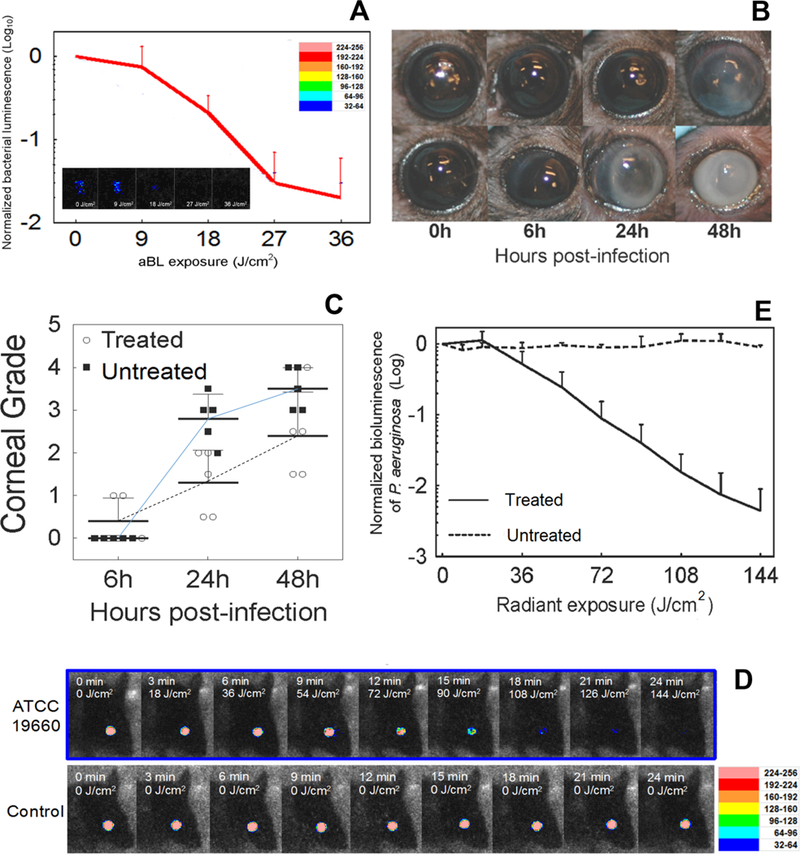Figure 6. aBL for infectious keratitis.

(A) Influence of radiant exposure of aBL on the bacterial luminescence intensity of mouse eyes infected with 5X10(5) CFU P. aeruginosa and treated with 36 J/cm2 aBL at 6 hours post inoculation. The inset shows the bacterial luminescence images from a representative mouse eye infected with 5X10(5) CFU P. aeruginosa and treated with 36 J/cm2 aBL at 6 hours post inoculation. Bacterial luminescence images were taken when 0, 9, 18, 27, and 36 J/cm2 aBL had been delivered. The pseudo-color scale bar indicates the bioluminescence intensity value of a single pixel in the bioluminescence images. (B) Photographs of two representative mouse eyes infected with 5X10(5) CFU P. aeruginosa treated with aBL (36 J/cm2) at 6 hours post infection (top row) or not treated (bottom row), indicating less opacity and damage in the aBL-treated mouse eye than in the untreated one. (C) Corneal pathology scores of the infected mouse eyes treated with 36 J/cm2 aBL at 6 hours post infection or not treated showing the higher mean corneal pathology scores of the untreated mouse eyes than the aBL-treated mouse eyes Analysis of the interaction between aBL treatment and time post infection shows that the effect of aBL treatment increased with the time post infection. Data were analyzed using the general linear model. (D) The bacterial luminescence images of representative mouse eyes infected with 5X10(5) CFU P. aeruginosa, treated with 144 J/cm2 aBL 24 hours later or left untreated. (E) Influence of radiant exposure of aBL on the bacterial luminescence intensity of the mouse eyes infected with 5X10(5) CFU P. aeruginosa, treated with 144 J/cm2 aBL at 24 hours post inoculation or left untreated. Bacterial luminescence images were taken when 0, 18, 36, 54, 72, 90, 108, 126, and 144 J/cm2 aBL had been delivered. From (92) no permission necessary.
